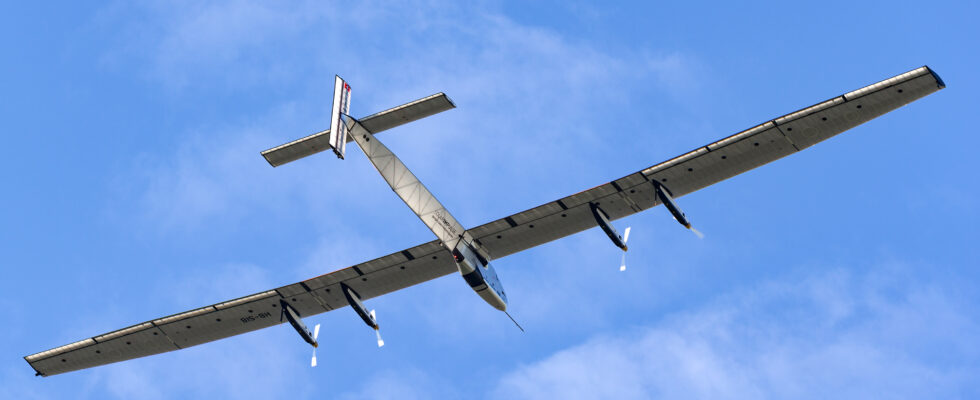Explorer Bertrand Piccard is launching an immense new challenge: a non-stop world tour in a green hydrogen plane, with the project called “Climate Impulse”. The flight is expected in 2028.
Notably known for his world tour by plane, carried out in 2016 under the Solar Impulse banner, or his balloon adventure, Bertrand Piccard unveiled, Wednesday February 7, 2024, a major new project: Climate Impulse. The clean technology pioneer and explorer wants to circumnavigate the globe aboard a green hydrogen plane this time, and is aiming for 2028 to complete his journey. The project is supported by the company Syensqo as well as the giants Airbus, Daher and Capgemini. Here’s what you need to know about this crazy challenge.
A world tour planned in 9 days, which mobilizes aeronautics giants
With Climate Impulse, Bertrand Piccard wants to complete a non-stop world tour aboard a plane powered by green hydrogen. The construction of the aircraft has already started and should last another two years, under the leadership of Raphaël Dinelli, a distinguished navigator with success in the Transat Jacques Vabre in 1997 (among others), today composite materials engineer.
Over the past two years, the Climate Impulse teams have taken the lead in carrying out tests and research around this experimental aircraft, all with the support of Airbus, Capgemini and Daher, and the participation of Ariane Group, which says a lot about the seriousness and feasibility of the project.
The challenge is obviously technical. Green hydrogen will be produced from renewable energies, before being used in fuel cells which will themselves be used to power electric motors. The major challenge today is maintaining the liquid hydrogen at a very low temperature, -253°C, over the entire duration of the flight, which should last nine days.
New generation thermal reservoirs will be designed
All this requires designing new generation thermal reservoirs. And for this, Bertrand Piccard and his teams will collaborate with Syensqo, a Belgian company specializing in composite materials, separated only a few weeks ago from the chemical company Solvay. Syensqo took over the chemical activities of Solvay.
With its composite materials, Syensqo will play a decisive role in the manufacturing of the hydrogen plane, from its fuselage to the hydrogen tanks. All while ensuring that the light structure of the device is preserved. Concerning green hydrogen, high-performance materials (binders for fuel cell electrodes; proton exchange membranes) will be essential and will serve a more compact design of the aircraft.
Climate Impulse in any case promises to push technological boundaries and, above all, aspires to be a standard bearer for climate action. “ More than a trip around the world with a hydrogen plane, Climate Impulse will explore new ways of thinking and acting to promote a better quality of life », Reacted Bertrand Piccard.

2